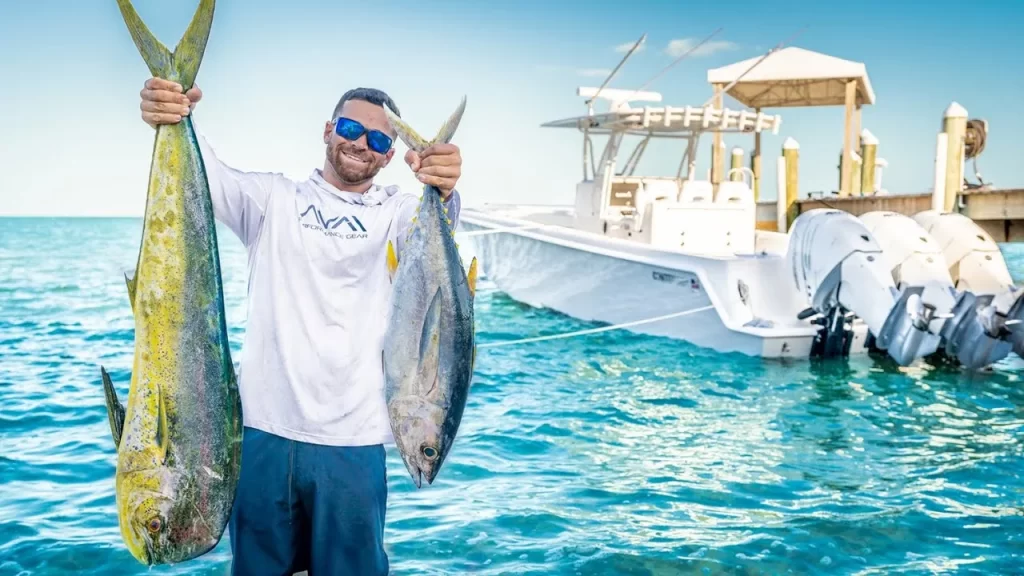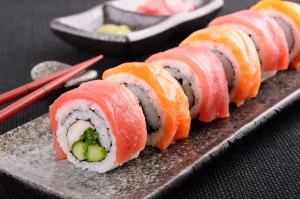Mahi-mahi are, indeed referred to by many under the name’s dolphinfish and dorado among the most game fishes to be prized and perhaps having an attractive coloration and bring a great punch while being very delicious.
And if you are a beginner who decides to take up the challenge of catching such beautiful fish, then you’re at the right place. Since this guide will equip you with all that you’ll be knowing about how to catch mahi-mahi-from choosing the right gear to good tips on where and when to fish.
Knowing Mahi-Mahi
It is useful to have some knowledge of this incredible fish when you are heading out targeting mahi-mahi. Mahi-mahis live in warm open waters. The species finds its habitat in tropical as well as subtropical waters spread around the world. They mostly school near floating rubbish, seaweed patches or lines of sargassum weed. Once the hook sets, mahi-mahi is fast, colorful, and acrobatic.
Mahi-mahi are offshore fish, roaming the open waters rather than dwelling near shore or on the ocean floor. These fish are often schooling and if you see one, you can assume that there will be others not too far away.
These are some of the fastest-growing fish in the sea and are voracious predators, making them a real blast to try and catch.
Choosing Appropriate Tackle
First things first, you need proper gear for mahi-mahi fishing. So, here’s what you will be needing:
Rod and Reel
A medium rod that includes a conventional reel or a spinning one would be appropriate for mahi-mahi fishing. A 6 to 7 foot or 20 to 30 pound test line is right for this purpose.
Fishing Line
Mahi-mahis like a 20- to 30-pound monofilament or braided line. Mono lines stretch a little, which can break the shock of a strike from a mahi-mahi. Braided lines are stronger and more sensitive, and you could possibly even detect a small bite.
Leader
Mahi-mahi have sharp teeth and a hard enough bite, so you want to use a fluorocarbon or monofilament leader. A leader of 40- to 60-pound test should prevent the fish from cutting through the line.
Circle Hooks: Good circle hooks of size 5/0 to 7/0 work well with live baits.
Artificial Baits: Extremely irresistible for a mahi-mahi, a bright-colored bait. Favorite bait to troll in skirts of color green, yellow, pink, or blue. It seems it is close to the colour of the small fish or the squid.
Jigs and Poppers: Jigs and poppers can help you in casting by catching the mahi around floating debris and weed lines.
Choosing the Best Lure
Mahi-mahi have no preference for what they eat, and they break apart easily both live and artificial baits. Some of the best baits used for mahi-mahi fish include:
Live Bait
Ballyhoo: This is probably the most common bait for mahi-mahi. The fish can’t resist these baits.
Pilchards, Sardines, and Mullet: Other small baitfish such as pilchards, sardines, and mullet are a good mahi-mahi choice.
Squid: Squid is best on live or dead bait; however, it has recently proven to be a fabulous bait when targeting mahi-mahi.
Where Mahi-Mahi lie
Mahi-mahi is an epipelagic fish that prefers warm waters typically between 68°F to 83°F (20°C to 28°C).
They tend to like open ocean waters but usually can be found near floating debris, weed lines or current breaks. Here are some of the key places to target mahi-mahi for:
Weed Lines
Of course, another good place to find mahi is along weed lines where sargassum seaweed forms long lines.
Weed lines can provide shelter for small schools of baitfish and crustaceans, and it’s a great place to target larger predators in the form of mahi-mahi. Long, continuous lines of seaweed floating on the surface are something to look out for.
Floating Debris
Mahi-mahi congregate to floating objects, from logs to buoys, or even trash. These floating objects build a mini-ecosystem which attracts the smaller-sized fish. And mahi-mahi is never far behind. So, when you see floating debris in the water, take a look at it.
Temperature Breaks and Currents
Mahi-mahi often lie in areas of temperature breaks, where the warmer and cooler waters meet at a given point. These areas have higher levels of nutrients, which attract baitfish and subsequently the bigger predators like mahi-mahi.
Handling and Landing Mahi-Mahi
Mahi-mahi are famous for their spectacular fight, sometimes jumping acrobatically and fast runs after getting hooked. Here are some tips on catching and landing them:
Fight the Fish
As soon as you hook mahi-mahi, you should hold pressure on the line and prepare to count several jumps since mahi mahis are infamous for their leaps; you would need to keep that line tight so they won’t throw the hook out. If the fish runs, let it take some lines before you start to reel in when it slows down. Gaffing
Once alongside the boat, you net him with a gaff. These mahi can be slippery and mighty active, so you need a gaff to pull that fish aboard safely. Aiming at an area just above the head of the fish, about where the shoulder should be, provides for an excellent hold.
Delicate Handling
Mahi-mahi are very beautiful fish with colors that fade out in a number of seconds once taken from the water.
If you’re going to re-throw the caught fish, handle it as few times as possible and put it back to the water as soon as possible to survive. If you will consume the fish, it should be put into ice as early as possible to have its best quality.
Safety Precautions for Mahi-Mahi Fishing
Mahi-mahi fishing is indeed exciting, but safety should first be called upon:
Wear a life jacket: If you have an offshore fishing trip, get a life jacket.
Observe weather: Ocean conditions are very unpredictable. Observe the forecast before leaving for a fishing trip and reline up towards shore if your weather starts getting worse.
Secure all gear: Churning of waves causes gear to shift around and create hazards. Your boat needs to be neat and secure all your fishing gear.
Conclusion:
Excellent for rookies and experienced anglers alike, mahi-mahi are great to catch because they are beautiful, hard-fighting fish. You can’t help but want them even when they bring some challenge into your fishing experience.
Proper gear, techniques, and knowledge of the behavior of mahi-mahi make it easily enjoyable. Observe a change in color of water or surface temperature as sometimes it indicates or hints at where the action could be found.
For wholesale and quality fish, Mahi-Mahi fish wholesale exporter Unimitra Seafood at the most affordable price.




